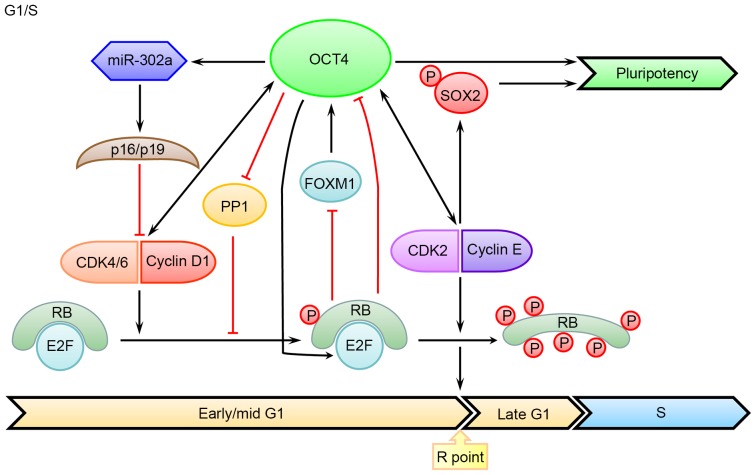Figure 1.
An overview of the roles of OCT4 in coordinating the G1/S transition and the maintenance of pluripotency. OCT4 promotes the phosphorylation of hypo-phosphorylated RB (a prerequisite for the R-point transition) by downregulating PP1 and upregulating CDK4/6-Cyclin D in early and mid G1 phase. At this point, phosphorylated RB still binds to E2Fs and blocks their transcription-activating domains, leading to suppressed expression of several cell-cycle promoting genes, including OCT4. OCT4 can further promote RB hyperphosphorylation by upregulating CDK2-Cyclin E complex, which leads to the E2F release, the R-point transition, and the entry into the S phase. CDK2 can also phosphorylate SOX2 to enhance reprogramming efficiency. Black arrows indicate positive regulation, while red bar-headed lines indicate negative regulation. PP1, protein phosphatase 1; CDK, cyclin-dependent kinase; FOXM1, forkhead box protein M1; RB, retinoblastoma; E2F, E2F transcription factor 1; OCT4, octamer-binding transcription factor 4; p, phosphorylated.

